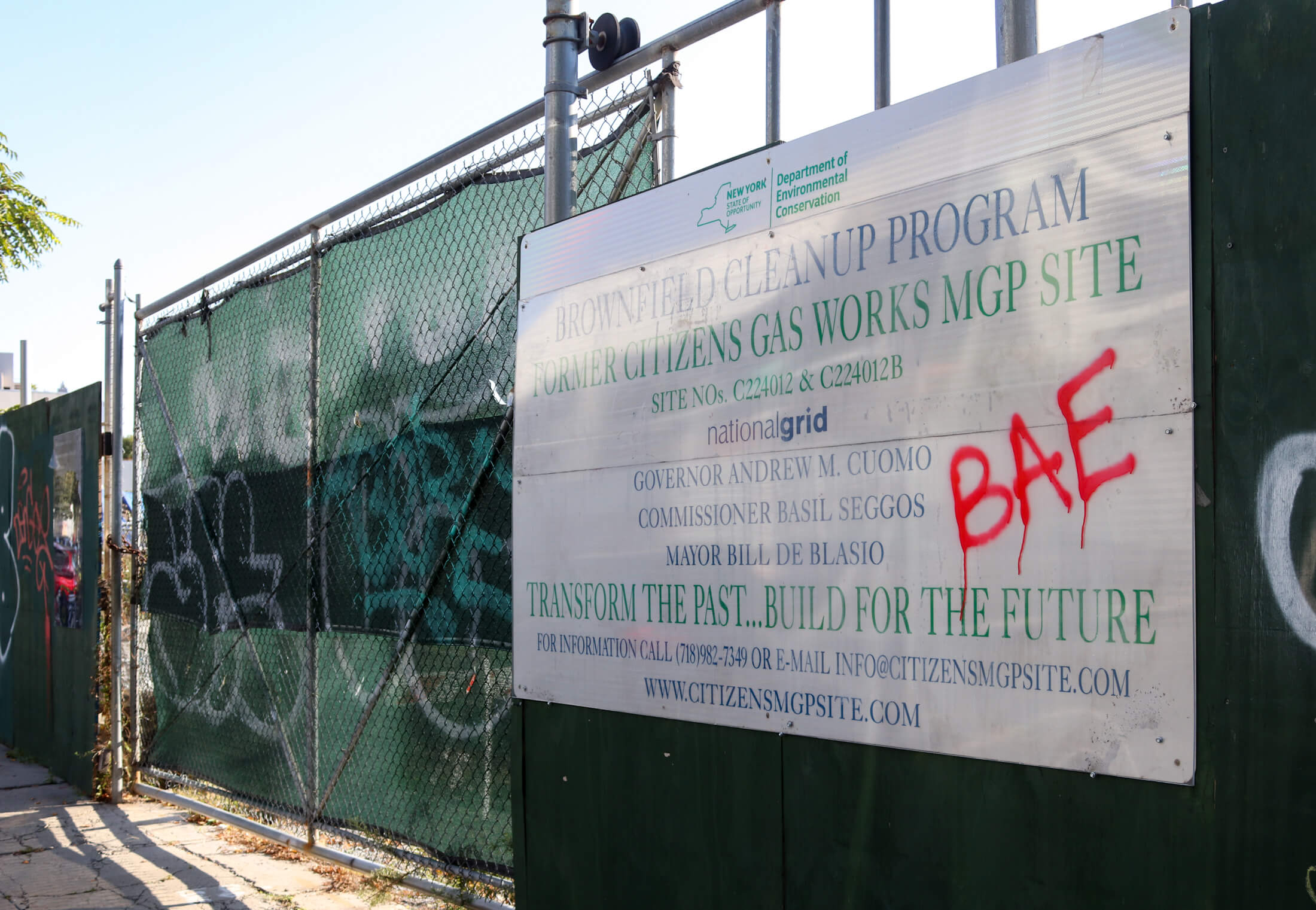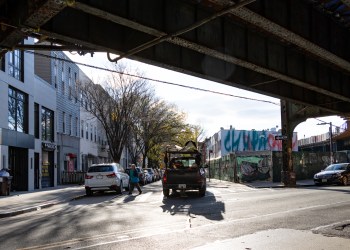National Grid Files Suit Claiming Others Should Help Pay for Gowanus Cleanup
The utility, which passes on costs to customers, says its fellow polluters aren’t doing their fair share to clean up the canal.

Utility giant National Grid has filed suit against dozens of companies it claims aren’t paying up for the Gowanus Canal Superfund cleanup. Photo by Susan De Vries
By Kirstyn Brendlen, Brooklyn Paper
Utility giant National Grid, one of the many parties responsible for turning the Gowanus Canal into a toxic Superfund site, is claiming its fellow polluters aren’t doing their fair share to clean up the canal — and that it can no longer shoulder the cost alone.
Earlier this month, the company filed a federal lawsuit against 40 defendants — including the City of New York and Con Edison — urging the court to force them to participate in the cleanup and pay National Grid back for the money it’s spent so far.
Who’s responsible?
When a site is added to the federal Superfund list, the Environmental Protection Agency identifies “potentially responsible parties,” or PRPs, who contributed to the pollution. Those parties, under federal law, must help pay for the cleanup — or carry out parts of it themselves, with oversight by the EPA.
The list of PRPs for the Gowanus Canal is long. Into the 20th century, industrial businesses and even government agencies dumped toxic waste into the canal and onto the land around it. By the time the canal was declared a Superfund site in 2010, its waters were largely devoid of life and covered in an oily sheen.
A September 2013 letter addressed to dozens of PRPs said the parties could be on the hook for more than $11 million plus interest, and asked which would voluntarily begin cleanup.
By that time, the EPA had already reached consent agreements with National Grid — which is responsible for the actions of the Brooklyn Union Gas Company — and New York City, and National Grid had begun paying.

“In the absence of a group of PRPs willing to respond to EPA’s orders, [National Grid] alone is spearheading efforts to investigate and clean up contamination at the Site and has been paying more than its fair share for the cleanup of the Canal,” the suit claims. “For years, Brooklyn Union has attempted to persuade responsible parties — each of whom has released hazardous substances into the Canal — to pay their fair share of costs for the cleanup as well.”
Aside from a handful of companies including Honeywell, ExxonMobile, and Hauck Manufacturing, who have settled on agreements with National Grid, the suit claims all other parties have refused to pay up — saddling National Grid with $1 billion in estimated costs — which are then passed on to the utility’s millions of New York City customers via rate hikes.
In July, the EPA announced it was set to begin cleaning up the most contaminated section of the canal, a project estimated to cost $369 million. The agency named six parties most responsible for polluting that section of the canal: National Grid, The City of New York, Con Edison, Hess Corp., Honeywell International Inc., and The Brooklyn Improvement Co.
“By their intransigence, the recalcitrant, remaining responsible parties are threatening to undermine the entire effort to clean up the Canal,” the suit reads. “For this reason, Brooklyn Union seeks the Court’s help to ensure that a stable funding stream is established, and the work can continue on schedule.”
The EPA told Brooklyn Paper it does not comment on pending litigation, and did not provide further information about the timeline of the planned cleanup.
Critics cast doubt on National Grid’s intentions
Some locals doubt the utility’s true reason for filing the lawsuit. Local advocacy group Voice of Gowanus said in an email that “the practical effect of NatGrid’s lawsuit will actually be to endanger and delay the cleanup.”
The group said National Grid “has never had any intention of doing a comprehensive cleanup in Gowanus … despite being responsible for the vast majority of the pollution.”
A National Grid spokesperson told Brooklyn Paper that the suit would “in no way slow down the ongoing cleanup process or alter National Grid’s commitment to continue leading on the cleanup while working with all PRPs to sort out the financial responsibility.”
“The Gowanus Remediation Team will continue to move forward to complete the EPA-mandated cleanup and environmental remediation of the Gowanus Canal,” the spox said in an email.
In a meeting of the Gowanus Canal Community Advisory Group last month, Brian Carr, the lead EPA attorney for the Gowanus Canal Superfund site, said the lawsuit shouldn’t slow the cleanup “in theory.” But, he said, National Grid has repeatedly attempted to slow down various projects around the canal.

In addition to its responsibility to the canal, National Grid is on the hook for multiple brownfield sites on the banks of the Gowanus — including Public Place, or the former Citizen’s Manufactured Gas Plant. One of the most heavily-contaminated sites in the neighborhood, Public Place is the future home of a large affordable housing complex.
Earlier this year, remediation ground to a halt when National Grid disagreed with new cleanup guidelines issued by the state’s Department of Environmental Conservation by order of the EPA — roughly two years after federal officials said the state’s planned remediation of Public Place might not be enough. The company is still working with DEC to find a solution.
“National Grid is doing everything it possibly can to stay in compliance while dragging everything out as long as they can to keep the money in the bank,” Carr said in a recording of the meeting obtained by Brooklyn Paper. “I’m not especially sympathetic to them because they are guaranteed a rate of return on investment … but they have tried to slow down the cleanup of Fulton, Citizen’s, the canal.”
During disagreements over large projects and issues, Carr said, EPA has told National Grid that they would take the money from the parties the company is suing and use its own funds to clean up, then sue National Grid to get the money back.
Editor’s note: A version of this story originally ran in Brooklyn Paper. Click here to see the original story.
Related Stories
- Containment System for Toxic Chemicals Due at Gowanus School Next Year
- Eager for Water Quality Data, a Neighbor Monitors the Gowanus Canal
- Extensive Construction in Gowanus Forecasts a Very Different Neighborhood Ahead
Email tips@brownstoner.com with further comments, questions or tips. Follow Brownstoner on X and Instagram, and like us on Facebook.









What's Your Take? Leave a Comment